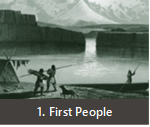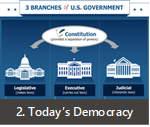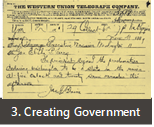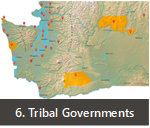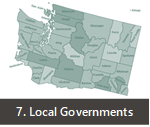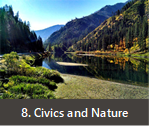The State We're In: Washington - Teacher Guide Ch. 4: 1900-2000: A Century of Change
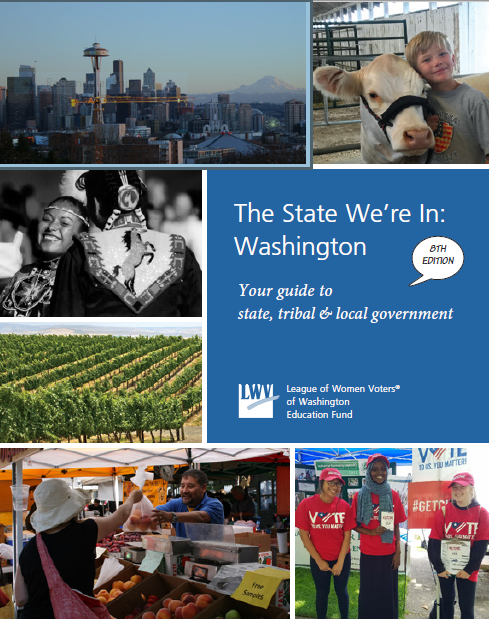
Book cover
Chapter 4 The State We’re In:
Washington
1900-2000: A Century of Change
This chapter focuses on the significant amount of change the state of Washington experienced from 1900 to 2000. The resources below may be implemented separately or together to guide students toward a deeper understanding of the content therein and to develop important social studies skills. All tasks and student handouts are in the Teacher Guide document below. Separate student handouts are also located under each task description.
Access the whole book: The State We're In Washington
Enduring Understanding
Washington changed a great deal in many different ways in the 20th Century (culturally, economically, politically, environmentally and ecologically).
Supporting Questions
Students consider these questions - finding and using evidence to support the Enduring Understanding.
- How have labor unions impacted our state?
- How has technology impacted our state?
- What are the most significant changes that our state has encountered?
- Can Washington balance a healthy natural environment and a successful economy in our state?
- How have human activities impacted our state over time?
Learning Targets
Students will be able to…
- explain how labor unions can impact our state (E4.6-8.3).
- explain how technology can impact our state (H1.6-8.5).
- compare various changes that have happened in our state over the last 100 years to determine the significance (SSS4.6-8.1).
- use evidence to support how Washington can balance a healthy natural environment and a successful economy (SSS4.6-8.1).
- determine how humans impact the environment of our state (G2.6-8.3).
Launch
Hook students into the content of Chapter 4 of The State We're In Washington
Distribute the Student Handout: Launch to students.
- If students are struggling with question 1 you may want to prompt them to think of how they have changed physically, emotionally, cognitively, etc.
- If students are struggling with question 2 you may want to prompt them to think of the changes to their neighborhood, city, county, or state.
- For the brainstorm activity encourage all ideas
- At the end of the launch you could collect all ideas onto an anchor chart for each class
Resources
Focused Notes
Activating student thinking about the content of the entire chapter.
- Distribute the Student Handout: Focused Notes to students.
- As students read they will record their understanding, thinking, and questions about the content using the handout. This can be done individually or collaboratively in pairs or small groups.
Resources
Text-Dependent Questions
Engaging students in a close reading activity about specific content in the chapter.
Distribute the Student Handout: Text-Dependent Questions document to students.
First Read
Have the students read the section and answer the First read questions on the Text Dependent Questions document.
Second Read
Use the Second read questions below to facilitate a small or whole group discussion about the reading section. When they are done have them use the Text Dependent Questions handout to record their notes.
- What does population mean?
- What does majority mean?
- Why do you think that the author chose to use a line graph on the first graph instead of a bar graph like the second and third graphs on the page.
- Why did the creator of the two graphs on the bottom of the page choose to stop the vertical axis at different percentages (70% and 12%).
- Why did the creator of the graph on the top part of the page choose to use several different colors on the people icons in the graph?
- Analyze the two graphs at the bottom of the page. Why do you think they were included on this page?
Post read
After students have done a first and second read of the page, use the following questions to facilitate a class discussion. Have students address:
- Why do you think that the author included a paragraph of text at the top of the page?
- Use the following links to graphs below to answer the question: Is the growth of different racial or ethnic groups in Washington similar to the growth projected for the whole nation? Why might this be?
- Hispanic population growth has leveled off since the Great Recession
- Percentage distribution of population in the United States in 2015 and 2060, by race and Hispanic origin
- Based on the information from the text and graphs on page 57, what racial or ethnic group is likely to be the largest in Washington in 2025?
Notes: You may want to use some or all the Second read or Post read questions. The purpose of the Text Dependent Question activity is to have students do multiple close reads of the text leading to discussion that engages all students. Therefore, you may need to add reading strategies that meet the needs of your students.
Resources
Focused Inquiry
A focused inquiry is a one to two day lesson that will have students engaging in the C3 Framework’s Inquiry Arc.
In this focused inquiry, students investigate the question Why were German-Americans and Italian-Americans not relocated and incarcerated like Japanese-Americans were during World War II? Students engage in the analysis of multiple sources to determine an answer to the question. Students will develop an argument that includes a claim, evidence, and reason that address the compelling question of this inquiry.
Standards
- SSS1.6-8.1 Analyze positions and evidence supporting an issue or an event.
- SSS1.6-8.2 Evaluate the logic of reasons for a position on an issue or event.
- SSS4.6-8.1 Analyze multiple factors, make generalizations, and interpret sources to formulate a thesis in a paper or presentation, while observing rules related to plagiarism and copyright.
- C3.6-8.3 Identify that according to the United States Constitution, treaties are “the supreme law of the land”; consequently treaty rights supersede most state laws.
- C4.6-8.2 Describe the relationship between the actions of people in Washington State and the ideals outlined in the Washington State constitution.
Learning Goals
- Students will be able to properly cite and use evidence from a source to support a claim.
- Students will be able to explain a reason for the incarceration of Japanese-Americans during World War II.
- Students will develop a claim with evidence and reasoning to answer the compelling question.
Compelling Question
Why were German-Americans and Italian-Americans not relocated and incarcerated like Japanese-Americans were?
Staging the Question
- Have students do a quick-write about a time they (or someone they know) was accused of something they did not do but they had no way of proving it.
- Have students share how they felt being wrongly accused.
- Explain that something similar happened to Japanese-Americans during World War II.
- Watch the video Looking Like the Enemy to build background knowledge about the issue and history of Japanese-American incarceration during World War II.
- During the video, students should look and listen for reasons Japanese-Americans were targeted for removal from the west coast and imprisonment.
Formative Performance Task:
- Use the Student Handout: Analysis Organizer to hold thinking about four sources.
- Answer the supporting question: What is a common idea, tone and/or message evident in the four sources?
Notes: There may be a need to activate and build general background knowledge before having students engage with the sources in the Student Handout: Analysis Organizer.
Page 61 of Chapter 4 of The State We’re In: Washington has a sidebar on Japanese internment but it is best read after engaging with this focused inquiry as it may rob students of the opportunity to think about the compelling question without prejudice.
The images present views that may be hurtful and/or offensive so it is important to be able to address this depending on the nature of the environment and culture of the classroom.
Featured Source in the Analysis Organizer
- Japs Keep Moving - This is a White Man's Neighborhood, photograph from 1920s California
- No Japs in Our Schools, meeting poster from 1906
- Warning Our Homes are in Danger Now!, propaganda poster from 1942
- Hold, campaign poster from 1920
Argument
Students analyze various visual sources to answer the question, Why were German-Americans and Italian-Americans not relocated and incarcerated like Japanese-Americans were?
Responses should include a claim, evidence, and reasoning and cite specific information from sources.
Taking Informed Action
Students will write to a state legislator inquiring about efforts in the state to ensure the liberties of groups of people are not lost in times of crisis. Use article I of the Constitution of the State of Washington (pg. 5) to identify rights that were violated by Japanese-American incarceration.
Resources
Looking Like the Enemy: Injustice at Home | PBS Learning Media
Teacher's Guide Menu
Download the all the guides in one document or click on an individual chapter below.
